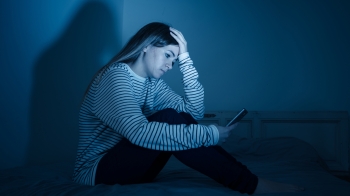
.png) M L Satyan
M L Satyan

A few days ago, one of my friends shared with me a sad news. His college-going daughter was found with severe depression for almost one week. During the counselling she revealed that she was being blackmailed by her classmate. She had posted her full-size photo on the Facebook. Her classmate morphed that photo and sent it to her demanding money and sexual favours. The girl was shocked to see an obscene photo with her face. Her classmate threatened her that he would make the photo public if she tells this news to her family or police.
In February, 2019 four men were arrested for allegedly blackmailing, sexually harassing and filming a 19-year-old college student in Pollachi, a small town near Coimbatore in Tamil Nadu. The case snowballed into a major scandal after local media reported that not just one but a few hundred women were victims of an organised racket of sexual abuse, blackmail and extortion. Compounding the horror, video clips of the alleged incidents, purportedly filmed by the accused, were also leaked within days of the media reports. Interrogation of the accused revealed that the racket has been running since 2013.
Based on Pollachi incident, a Tamil movie titled “Etharkum Thuninthavan” (means “person who dare to do anything”) was made. This was telecast on July 9, 2023. I watched this film. The sad incident in my friend’s family and the movie bothered me so much that I did a brief study.
There is a misconception that sexual abuse can occur only in person. Sexual abuse can and does happen on social media and in other online forums. It is common for perpetrators of sexual abuse to make initial contact online, and then slowly progress to in-person abuse.
Adolescents use mobile phones and the web to interact with both known and unknown peers to establish and maintain social connections. Such communication platforms are free and are relatively easy to use. Compared with adults older than 25 years, youth between 12 and 24 years of age are the most extensive users of new technology and are more likely to be connected to the virtual world, regardless of socioeconomic status, race, or ethnicity.
Taking the positive side into consideration, social networking sites allow users to connect with the families and friends within seconds residing far away from them through audio and video calls, chat-rooms and many other functions provided by it, which help in bridging the gap between persons.
The social networking sites also help in finding and providing appropriate employment and educational opportunities to finders of the same. More importantly, social media is the easiest way to express opinions and views. Therefore, social media makes life accessible and enjoyable for the people.
Nonetheless, social media also leads to social isolation as face-to-face interaction had become minimal in the times of pandemic. This, in turn, affects the mental, emotional, psychological health of the people and causes anxiety, fear of missing out, depression and many other issues. Privacy, these days, has become a matter of concern. The third party uses the private information of the individuals and commits cyber-bullying and cyber-theft among teenagers.
The spread of obscene content on the social media makes the youth vulnerable to these things. They lose their productivity in online chatting all day. Also, the misinformation spreads faster rather than relevant one, which can be for any purpose such as advancing enmity between various ethnic and religious groups or misleading people, and aggravates virtual hate crimes.
Sexual abusers often use a process called “grooming” in which they pursue a relationship with their victims, particularly children, to gain trust, then progressively expose them to sexual matters. They may lie about their identity, particularly their age, as part of their attempts to ensnare victims. They may frequent online venues where minors gather, or may interact with topics of interest to young people as part of their strategy.
Secret-keeping is an essential part of victim-grooming. An abuser may share sexually explicit imagery with their victims via social media as a way of establishing a “secret,” and then use that as a basis for further interactions. Privacy has just remained a mere nomenclature. Almost all the sites use cookie policy to detect the tastes and preferences of the user. In addition, the incidences of publication of obscene material are increasing day-by-day.
In online spaces, groomers may also use blackmail, threatening to expose a victim’s intimate details if they do not comply with the perpetrator’s wishes. A groomer may also ply the victim with gifts or money and may threaten to cut off the gifts if the victim speaks out. Abusers may also emotionally manipulate the victim, preying on their need for affection and affirmation and telling the victim that others would keep them from seeing each other or be jealous of the relationship.
According to the Centre for Disease Control and Prevention, one in three females and one in four males experience sexual abuse in their lifetimes. Many instances of sexual abuse occur against children and teens. While movements such as the #MeToo social media phenomenon have shed light on the prevalence of sexual harassment, abuse and assault, many victims of sexual abuse still live with fear and shame.
Surprisingly, “India was the second most cyber-attacked country in Asia-Pacific in 2020”, read the headline in The New Indian Express newspaper. India continues to remain vulnerable in this sector. This is not a good sign for a country which is having cyber-related laws. These laws are not exhaustive and, therefore, need reforms with the changing need of the hour. Thus, it becomes a massive requirement to ensure cyber-security when the world is moving towards a global digitalization.
Helping victims overcome the harm caused by online sexual abuse begins with holding those responsible to account, as well as contacting a licensed therapist and law enforcement. Above all, we need to sensitize our youth on this social media crime. Prevention is better than cure!